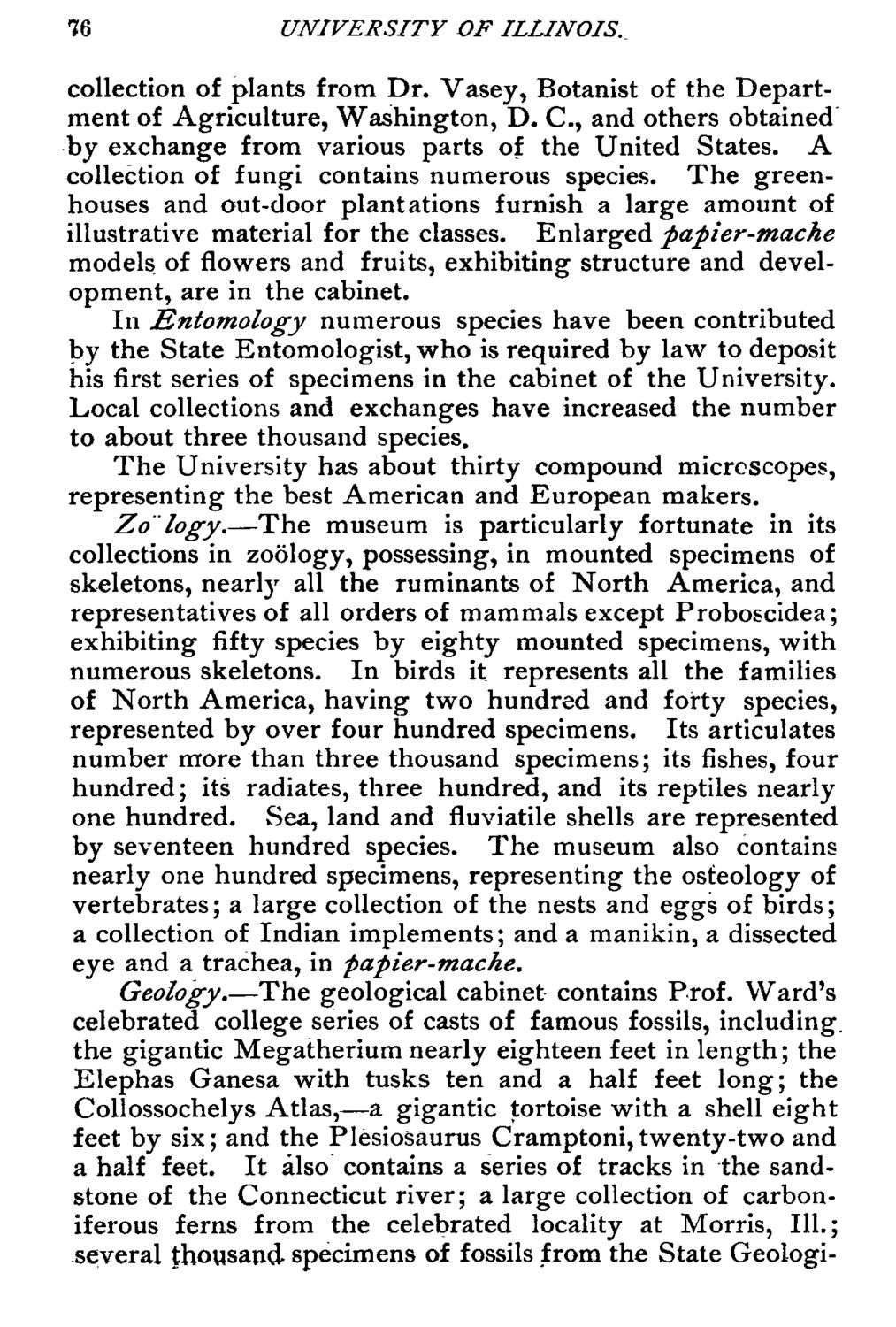| |
| |
Caption: Course Catalog - 1887-1888
This is a reduced-resolution page image for fast online browsing.

EXTRACTED TEXT FROM PAGE:
76 UNIVERSITY OF ILLINOIS. collection of plants from Dr. Vasey, Botanist of the Department of Agriculture, Washington, D. C , and others obtained by exchange from various parts of the United States. A collection of fungi contains numerous species. The greenhouses and out-door plantations furnish a large amount of illustrative material for the classes. Enlarged -papier-mache models of flowers and fruits, exhibiting structure and development, are in the cabinet. In Entomology numerous species have been contributed by the State Entomologist, who is required by law to deposit his first series of specimens in the cabinet of the University. Local collections and exchanges have increased the number to about three thousand species. The University has about thirty compound microscopes, representing the best American and European makers. Zo logy.—The museum is particularly fortunate in its collections in zoology, possessing, in mounted specimens of skeletons, nearlj' all the ruminants of North America, and representatives of all orders of mammals except Proboscidea; exhibiting fifty species by eighty mounted specimens, with numerous skeletons. In birds it represents all the families of North America, having two hundred and forty species, represented by over four hundred specimens. Its articulates number more than three thousand specimens; its fishes, four hundred; its radiates, three hundred, and its reptiles nearly one hundred. Sea, land and fluviatile shells are represented by seventeen hundred species. The museum also contains nearly one hundred specimens, representing the osteology of vertebrates; a large collection of the nests and eggs of birds; a collection of Indian implements; and a manikin, a dissected eye and a trachea, in -papier-mache. Geology The geological cabinet contains Prof. Ward's celebrated college series of casts of famous fossils, including, the gigantic Megatherium nearly eighteen feet in length; the Elephas Ganesa with tusks ten and a half feet long; the Collossochelys Atlas,—a gigantic tortoise with a shell eight feet by six; and the Plesiosaurus Cramptoni,twenty-two and a half feet. It also contains a series of tracks in the sandstone of the Connecticut river; a large collection of carboniferous ferns from the celebrated locality at Morris, 111.; several thousand- specimens of fossils from the State Geologi-
| |